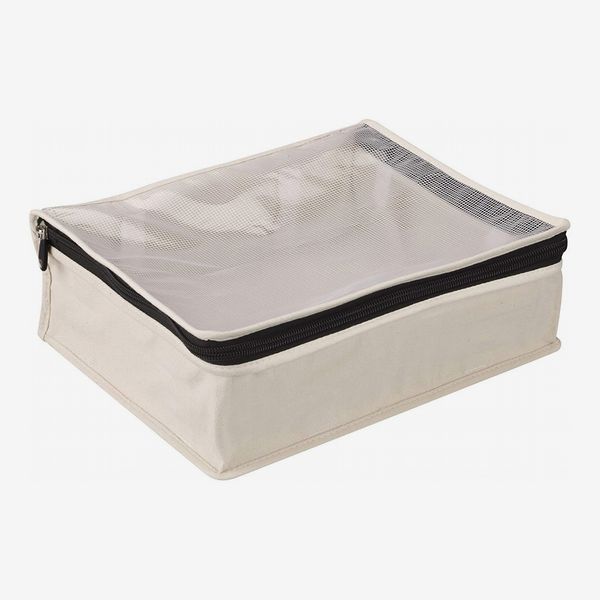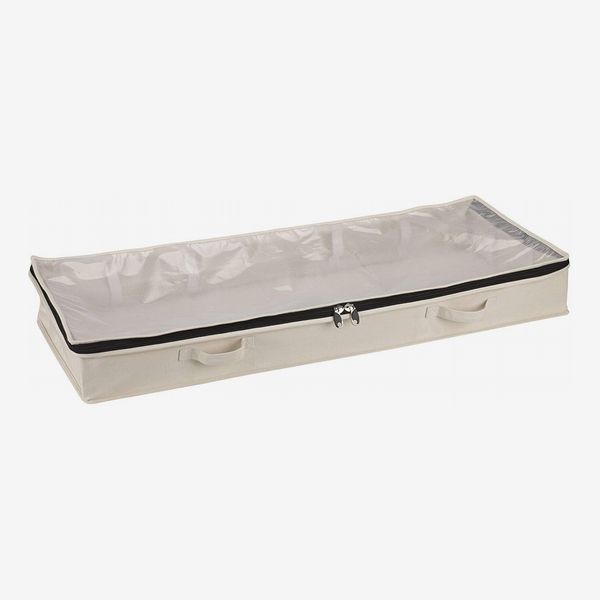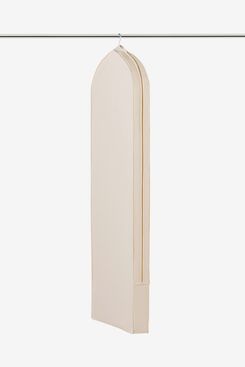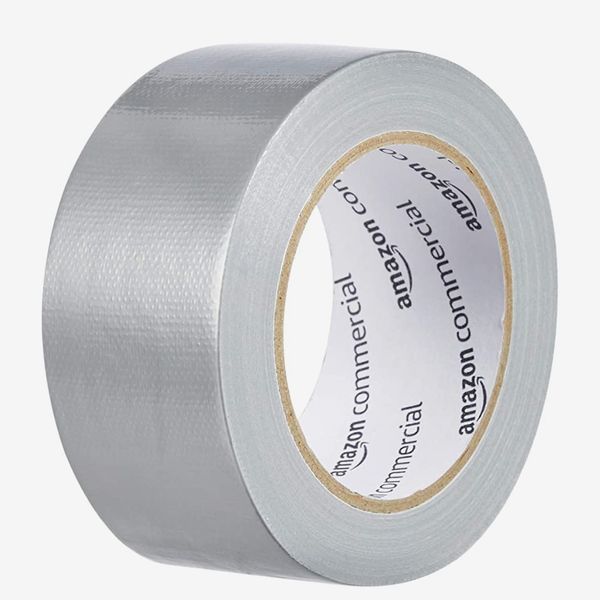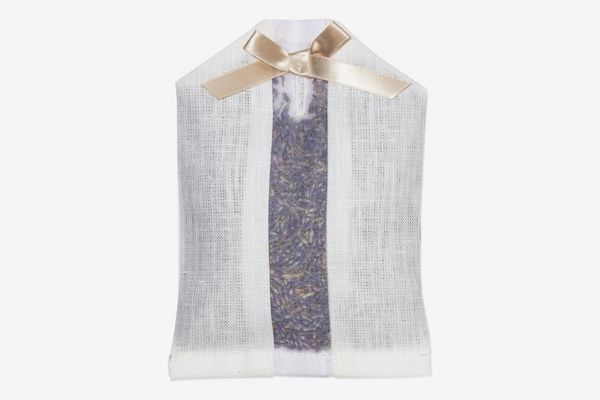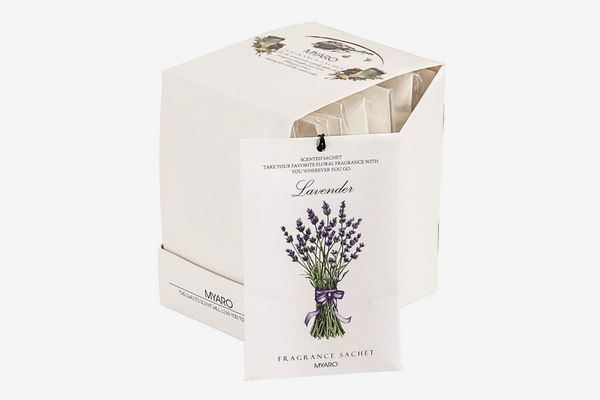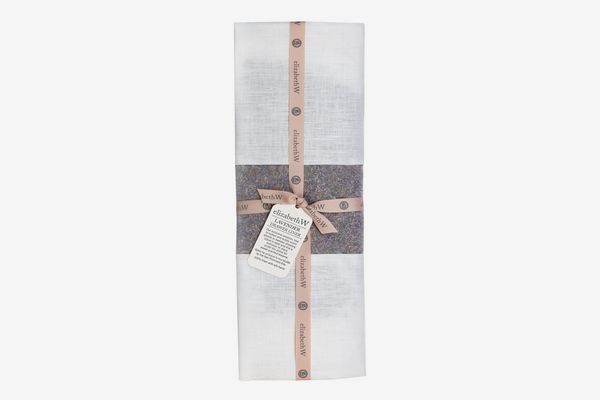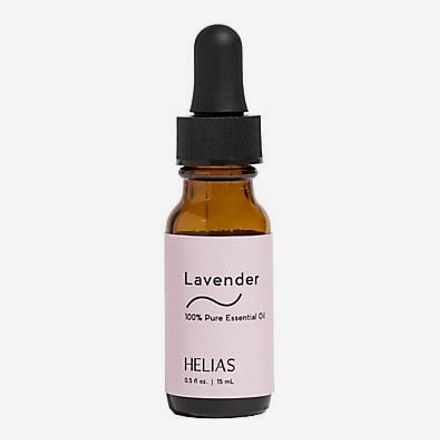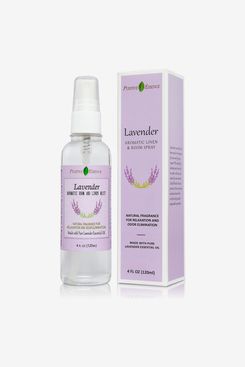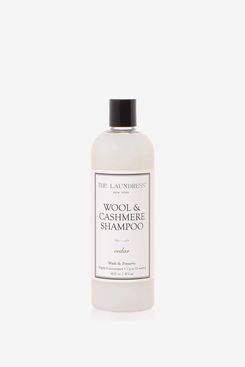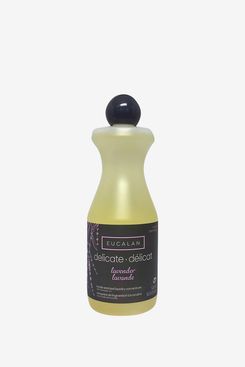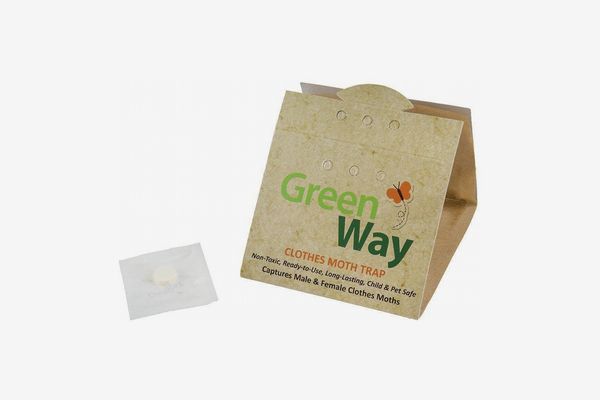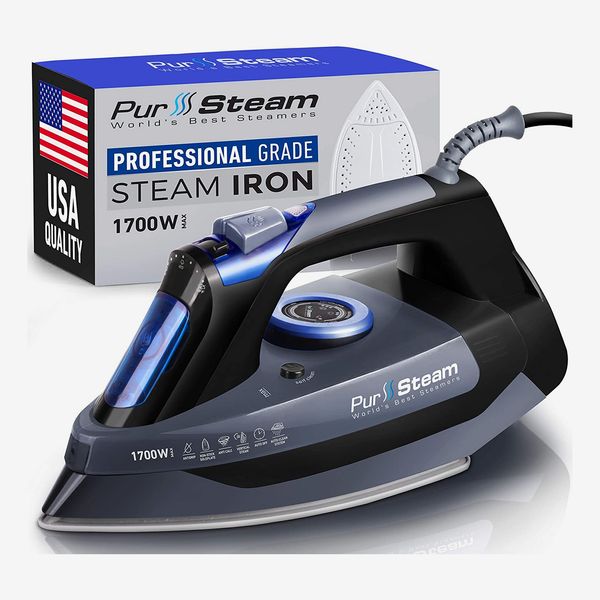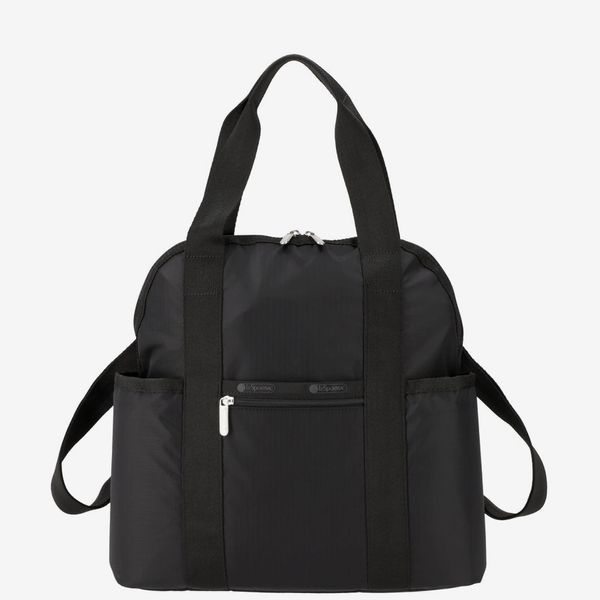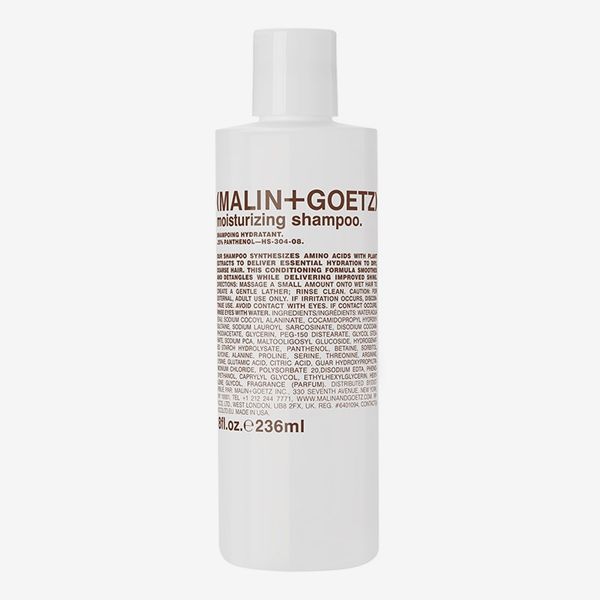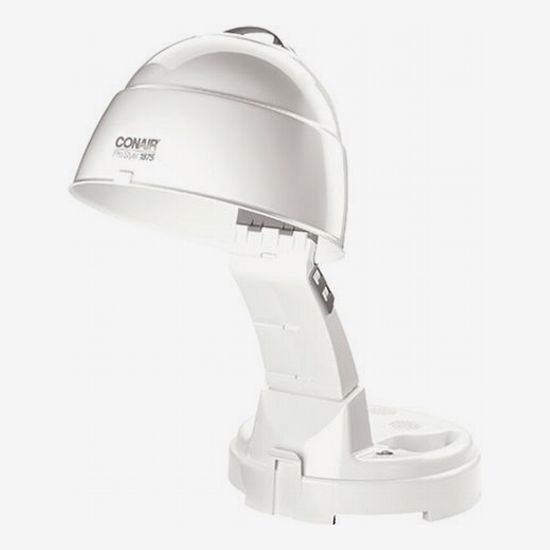
If you’ve ever found tiny holes in your favorite wool and cashmere sweaters, you probably asked yourself two questions. The first, for us at least, is, Can I still get away with wearing this? But then comes the bigger question: What do I do to get rid of the moths that caused them? “There are two different types of moths that damage textiles: webbing and case-bearing clothes moths,” says Meredith Wilcox-Levine, a professional textile conservator at Textile Conservation Workshop. Both kinds eat your clothes, but the latter does something called grazing, chewing at a top layer of fabric without leaving a hole. Wilcox-Levine describes the little sweater ruiners as “tiny, nearly transparent caterpillars,” explaining that they eat protein to prepare for metamorphosis. Unfortunately, “at the point where larvae are large enough to be easily noticeable, they will already have eaten away at your favorite items.” says Corinna Williams, co-founder of the Brooklyn laundromat-slash-coffee shop Celsious. And if you’re seeing fully winged adults, it’s definitely too late. Because moths don’t like movement, Benett Pearlman, founder and CEO of Positive Pest Management, says this past year was huge for moth infestations, as people abandoned whole work wardrobes for the same two pairs of sweatpants. “We are getting the worst pandemic of moths that we’ve ever had in Manhattan because of the coronavirus,” he says.
So even if you haven’t seen any holes just yet, you’d be smart to invest a little time in prevention as you pack up your sweaters for the summer. We asked Pearlman, Wilcox-Levine, Williams, and three other experts for the best ways to prevent moths, along with how to get rid of them (and prevent them from reproducing) if they’ve already taken up residence.
How to prevent moths
To prevent a moth infestation, Gwen Whiting, co-founder of The Laundress, says you should first learn what they like to eat, and what they can’t eat. “Moth larvae typically target clothes made from animal fibers such as silk, wool, cashmere, angora, or fur, and materials that contain keratin, the fibrous structural proteins found in our skin and hair,” she says. There’s one useful exception: “Moths cannot eat through cotton,” says Lindsey Boyd, The Laundress’s other co-founder. But, according to Pearlman, that doesn’t stop them from trying. “Moths are not endowed with the ability to detect whether a piece of clothing is wool or not until they start to chew into it. But the minute they taste that it’s not wool, they do an about-face.” So while they won’t chew through your cotton or synthetic clothing, they could still do damage trying. For that reason, in addition to your cashmere sweaters, Pearlman suggests storing any valuable clothing in completely sealed storage bags to prevent moth larvae from entering.
Boyd and Whiting recommend thick but breathable cotton canvas storage bags with zipper closures and advise against anything made of plastic or cardboard, which could trap moisture and create humid moth-friendly environments. Similarly, Hannah Yokoji, brand director at The Laundress, says you should also avoid storing clothing in humid or damp places like attics or basements as they “are optimal environments for moth breeding.” This zip-up box is a convenient shape for storing sweaters.
This one is well-suited for longer garments that get stored under the bed or in drawers.
For things you’d rather store hanging up, like dresses, suits, and coats, try this 100 percent cotton garment bag that zips all the way closed. It’s also nice for anything you’d prefer to access quickly.
If you already have garment bags you like, but they have a little gap at the top near the hanger, Pearlman recommends sealing them up with duct tape. “Just duct tape that hole to the point where nothing could squeeze through around the hanger,” he says.
Whiting, Pearlman, and Yokoji advise against using mothballs, which Whiting says are “are toxic and leave permanent, noxious odors.” (Plus, we all know they smell awful.) She also warns against cedar wood blocks or chips, which can leave stubborn oil stains on fabrics or cause acidification damage. Instead, she recommends lavender pouches that can attach to hangers or get tossed into drawers. “Lavender has been used for centuries for its bug-repelling properties,” she says. “It has terpene compounds that are said to help keep moths away,” she says. As for what terpene compounds are: the linalool, linalyl acetate, cineole, and camphor in lavender are what’s thought to help repel moths, as well as other pesky insects like mosquitoes. The latter two compounds are thought to have insecticidal properties. Those are also found in rosemary, but at lower levels than in lavender.
Whiting especially likes these fancy linen-encased lavender products from San Francisco brand ElizabethW.
Pouches will work for drawers, too, but there’s also the option of a lavender drawer liner.
Lavender oil is a good idea for scaring off clothes moths, too. Williams suggests hand-washing “vulnerable garments” with a few drops of natural essential lavender oil at the end of the season. The oil can also re-scent pouches that have faded over time.
Or, Williams says to treat recently laundered clothes with a spritz of lavender linen spray.
How to get rid of moths
If you suspect that moths have already gotten into your wardrobe and laid their eggs, there’s still time to evict them and spare any uneaten sweaters. While Pearlman recommends dry-cleaning clothing prior to storing it, Williams and Yokoji suggest first washing garments either by hand or on a wool setting in the washing machine using detergent formulated for protein-based fibers, in order to remove the larvae. “Moths are attracted to dirty, odorous clothing,” says Yokoji, noting that they really go for clothing with lingering perfumes, body oils, and food stains.
This gentle, concentrated detergent from The Laundress features a fresh cedar scent that smells great to people but not to moths.
[Editor’s note: On November 17, 2022, the Laundress issued a safety notice about all of its products, recommending that you “immediately stop using all The Laundress products in your possession. We have identified the potential presence of elevated levels of bacteria in some of our products that present a safety concern.” Its investigation is ongoing, so until we hear otherwise, we do not recommend that you purchase new products from the Laundress or continue to use the ones in your possession.]
And this lavender-scented delicate wash from Eucalan is great on wool, silk, and other natural fibers.
“If you want to add an extra layer of security, place one pheromone trap in your closet to attract male adult moths and prevent them from procreating,” Williams says. Pheromone traps are non-toxic, sticky traps that lure and kill adult moths with the artificial scent of a mate. “This type of trap is the way to go, rather than a cheaper, sticky ‘catch-all’ trap,” says Wilcox-Levine. And you only need one: “Moths can detect the pheromone from hundreds of feet away, so placing more than one can actually confuse them and just make them flutter back and forth,” Williams says.
Lastly, you can always try fighting moths with extreme temperatures: Williams suggests ironing items without any steam, because the heat can kill any larvae still clinging on to fibers. Conversely, anything that can’t be ironed can be frozen: “Place infested items in disposable, airtight bags to store them in the freezer for a few days,” suggests Boyd. However, in order to truly kill moths of all ages, specifically the cocoon-protected larvae, Wilcox-Levine says you’ll need something colder than the chill levels of a home freezer. Instead, you’ll need to put moth-infested items in a sub-4 degrees freezer, for a period of at least two weeks. Or you could call a professional to come fumigate your place.
The Strategist is designed to surface the most useful, expert recommendations for things to buy across the vast e-commerce landscape. Some of our latest conquests include the best acne treatments, rolling luggage, pillows for side sleepers, natural anxiety remedies, and bath towels. We update links when possible, but note that deals can expire and all prices are subject to change.
Every editorial product is independently selected. If you buy something through our links, New York may earn an affiliate commission.
